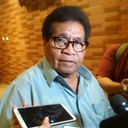Tentang KamiPedoman Media SiberKetentuan & Kebijakan PrivasiPanduan KomunitasPeringkat PenulisCara Menulis di kumparanInformasi Kerja SamaBantuanIklanKarir
2025 © PT Dynamo Media Network
Version 1.103.0
Konten dari Pengguna
Sorong City and Its Geographical Position
22 Desember 2021 13:14 WIB
Tulisan dari Michael Manufandu tidak mewakili pandangan dari redaksi kumparan

ADVERTISEMENT
The largest city in West Papua province, Sorong, is located on the tip of New Guinea island. This city is also known as Oil City, whereas Nederlands Niew-Guinea Petroleum Maatschappij (NNGPM) started their oil drilling activity in 1935.
ADVERTISEMENT
Sorong City is very strategic because it is the corridor and transit area to West Papua province. Sorong City is also an industrial, trading and service city because it is surrounded by other regencies which possess abundant natural resources. Thus, it is opening the door for investors from within Indonesia and also abroad to invest.
Sorong City Geographical Position
Based on its geographical position, Sorong City is located on the coordinate 0.8762° S, 131.2558° E.
On the north and east, it is bordered with Makbon district and Dampier Strait, on the south there are Aimas district and Salawati district, and on the west is Dampier strait.
Sorong city area coverage is 1.105,00 km² or 1.13% of the total coverage of West Papua. This city area is located 3 meters from the sea level. As for the topography it is varied, it consists of hills, valleys, mountains, and plateaus. On the west it is surrounded by dense forests. These are protected forests and also recreational forests.
ADVERTISEMENT
Climate in Sorong City
Sorong City has a rainforest tropical climate, with minimum degree around 23 °C and maximum of 33 °C. Annual rainfall is around 2.700 to 3.200 mm. Rainfall is relatively equal throughout the year and there is no month without rain. Total days of no rain every month is around 9-27 days. Humidity is around 83%.
Demography
Based on the census of 2010, the population in Sorong City is 190.341 people, consisting of 99.898 men and 90.446 women. The highest population is in North Sorong, 44.774 people and the smallest is in Sorong Island with a total population of 9.710 people. In 2017 the population in Sorong city increased significantly into 239.815 people (125.015 men and 114.800 women).
ADVERTISEMENT
Comparison between men and women or sex ratio in Sorong City is 110,45%. From six sub-district in Sorong City, the highest ratio is in East Sorong, it is 114,97%.
Religion
As for the religion percentage in Sorong City, the majority is Christian 55,78% (Protestant 40,28% and Catholic 15,50%), followed by Muslims 43,41%, Buddha 0,59% and Hindu 0,22%.
Native West Papuan in general are Christian. There are also some other ethnicities like Batak, Minahasa, NTT, Maluku and a small percentage of Chinese, Java and Dayak. Muslims are mostly from Java, Sunda, Bugis, Makassar, Minangkabau and other ethnic. Buddha is mostly Chinese and Hindu is mostly Balinese.
Economy
The main commodities in Sorong City are agricultural and service. The main agricultural commodities are cacao, coconut, and cloves. As for tourism, it is natural tourism and cultural tourism.
ADVERTISEMENT
There is one port in Sorong City they can use to facilitate tourism and trading. It is called the Port of Sorong. There is also one airport, Domine Eduard Osok Airport. Before this airport was built, they used another airport named Jeffman Airport in Jeffman island. Since they need to use a boat from Sorong City, it is not convenient for the airplane passengers. At the moment, this airport is not in service anymore.
Conclusion
Sorong City in West Papua has a lot of potential for tourism and economy. It is the biggest city in West Papua and has its own airport. The location is strategic, so many investors can invest their money here and easily access other places in West Papua through this city.
ADVERTISEMENT

